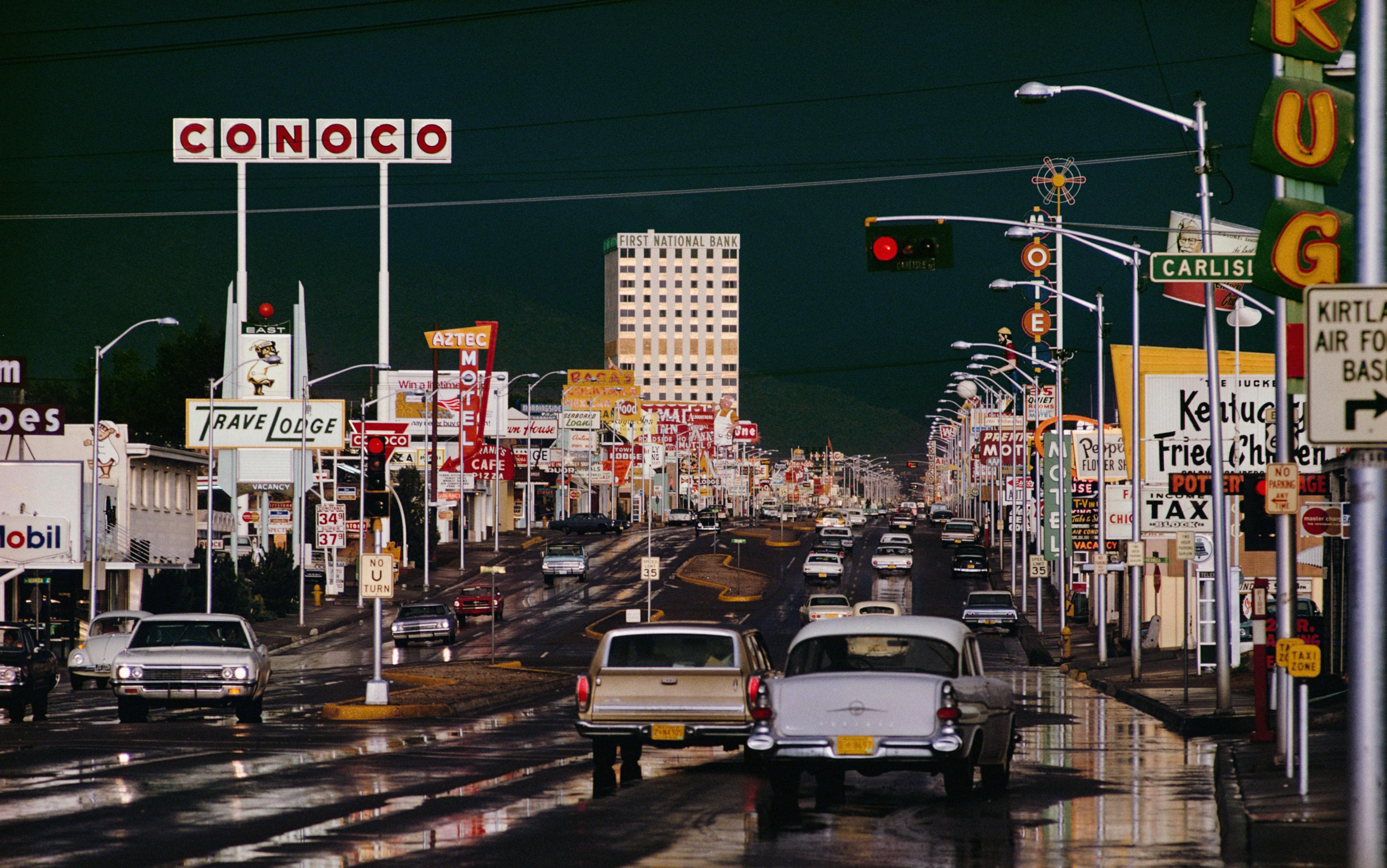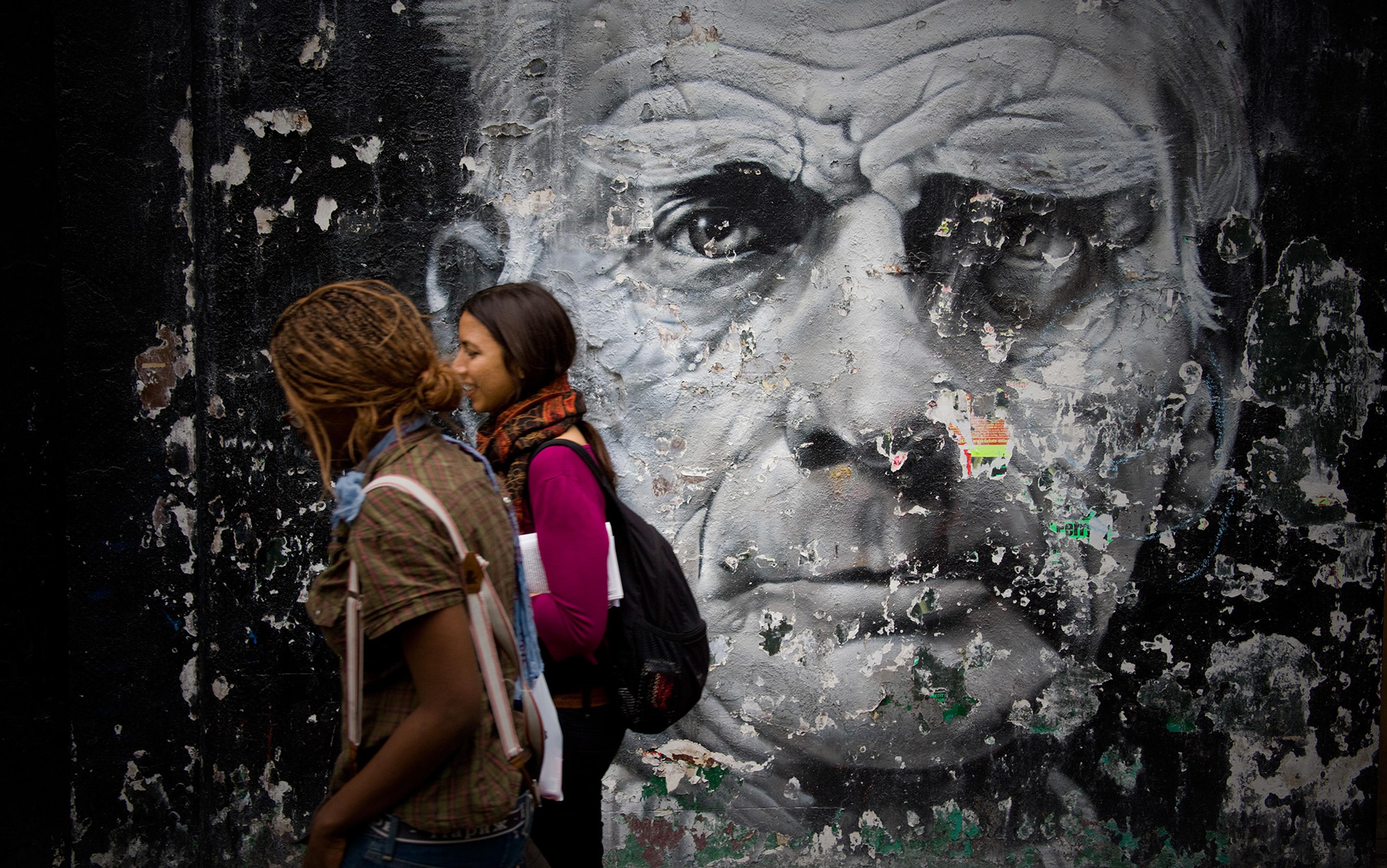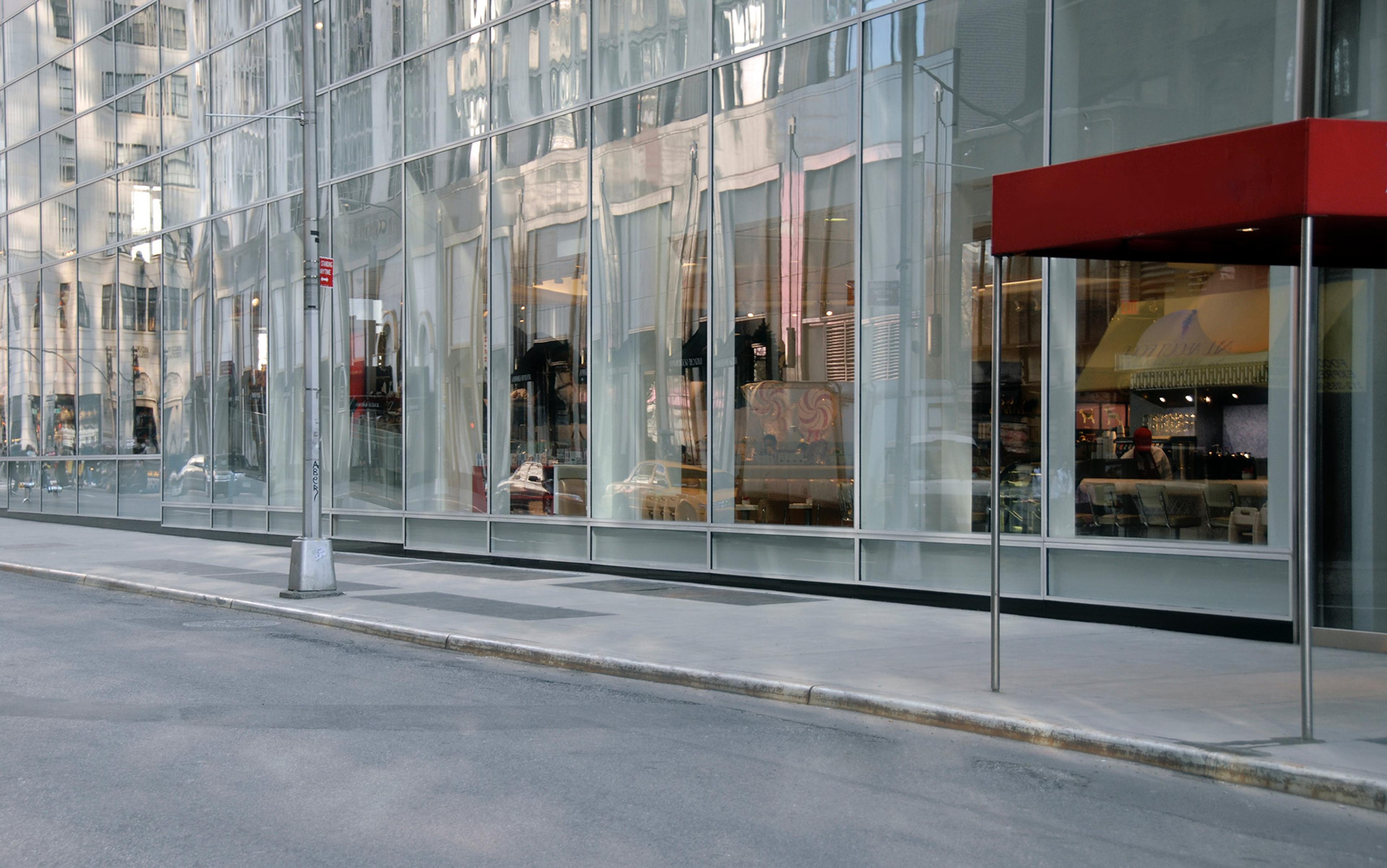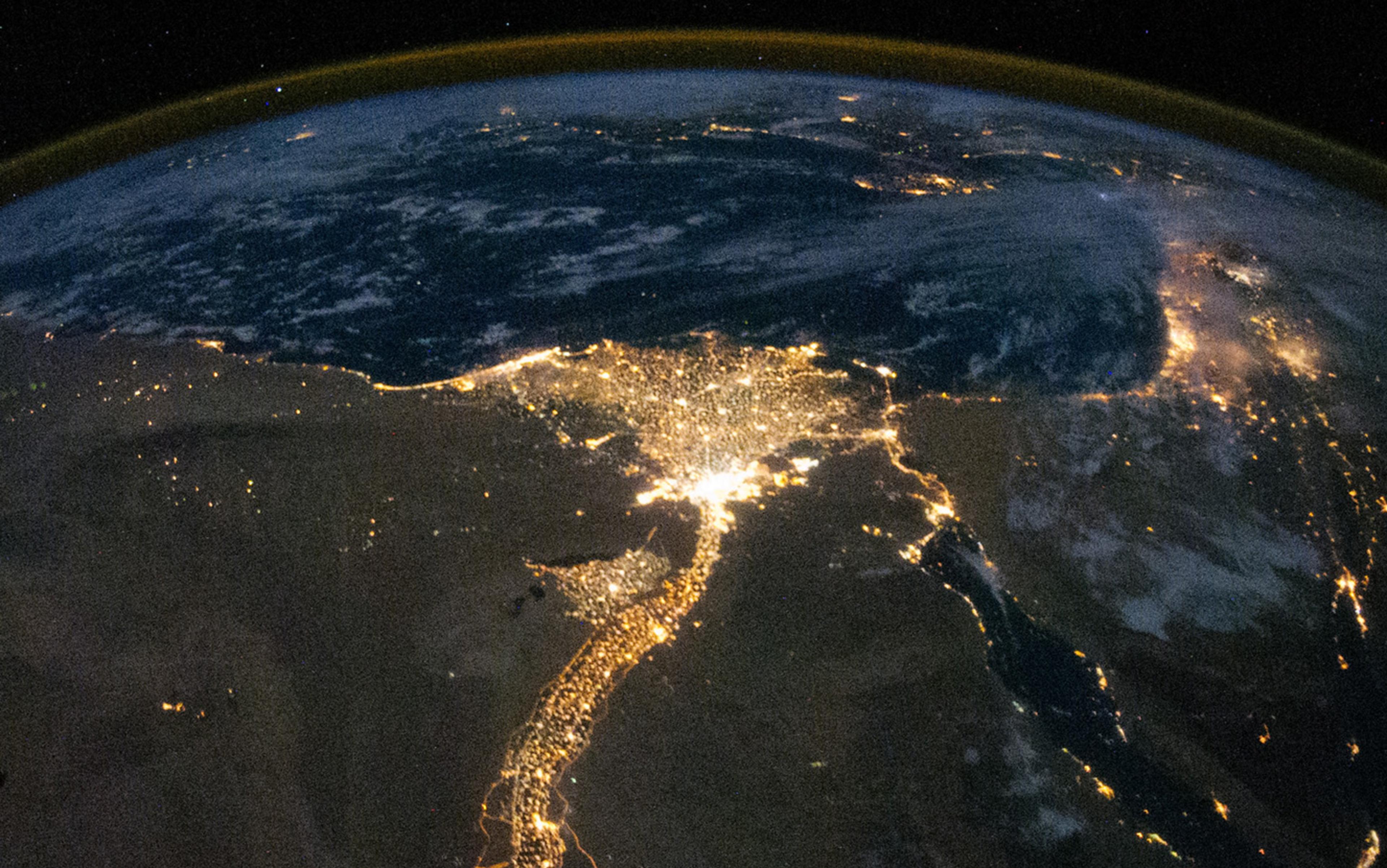In 2011, Raquel Nelson was convicted of vehicular homicide following the death of her four-year-old son. Nelson, it’s crucial to note, was not driving. She didn’t even own a car. She and her three children were crossing a busy four-lane road from a bus stop to their apartment building in suburban Atlanta, Georgia. She’d stopped on the median halfway across when her son let go of her hand and stepped into the second half of the road. Nelson tried to catch him but wasn’t fast enough; she and her two-year-old daughter were also injured.
The driver admitted to having alcohol and painkillers in his system (and to being legally blind in one eye) and pleaded guilty to the charge of hit-and-run. He served six months in prison. For the crime of walking three tired, hungry children home in the most efficient way possible, Nelson faced more jail time than the man who had killed her son.
I am writing from a position of privilege. Not white or middle-class privilege – although I am both of those things and those facts play a role in my privilege – but rather, the privilege Americans don’t realise they’ve lost in a nearly Orwellian fashion: I can open the door of my home, take my kids by their hands, and meet almost any need by lifting my feet and moving forward. Food, schools, social centres, books, playgrounds, even doctors and dentists and ice cream – nearly everything our family uses daily is within about a mile’s walk of home and well-served by wide, uncrowded sidewalks.
This is the kind of privilege that Raquel Nelson, and millions like her, might never experience. I’ve walked her steps, dealing with cranky children after a long day, worn out, longing for sleep, weighed down with groceries, and then suddenly reaching out with a pounding heart as my littlest one ran into a busy street. Reading her story, I find the inhumanity of Nelson’s situation staggering. There’s the injustice of her conviction, but beyond that is this: she was walking. There is nothing more human, more natural, more fundamental to our freedom, than transporting ourselves by foot. Nothing more purely instinctive than a child answering the desire of feet, legs, spine, and head, to dart forward in the direction his brain urges him to go.
Human beings evolved to move at a pace of three miles an hour, breathing easily, hands free, seeking food and shade. We tread without thinking, toes pushing off from the soil, cheeks lifted to catch the air, dirt caking in our nostrils. Walking is the first legacy of our post-ape genes, the trait that makes us most human: H. sapiens came only after H. erectus. We walked, and began our intellectual toddle toward the Anthropocene.
Our most basic access to health comes from walking. Walking for just 30 minutes five days a week has been shown to have a significant impact on everything from obesity to depression and colon cancer. A normal day’s errands would easily take more than 30 minutes on foot. When we get around by driving instead we’re liable to become overweight, insular, edgy. In his book The Story of the Human Body, the evolutionary biologist Daniel E Lieberman dissects the widespread chronic health problems that he thinks are linked to sitting for long periods, including in cars: muscle atrophy, lower-back pain, cardiovascular disease, diabetes. ‘We are inadequately adapted to being too physically idle, too well fed, too comfortable,’ he says.
But exercise is perhaps the narrowest of considerations. Walking is a complex interconnection of cognitive processes and sensory inputs. The transfer of information from foot to brain, between the inner ear and visual reception, is mind-bogglingly difficult to calculate. Only the most recent neuroscience research is beginning to grasp the bidirectional link between cognitive and motor functions, and the role cardiovascular health plays in our mental wellbeing. Yet walking as a way of life is more out of reach than ever, especially for those in poorer neighbourhoods.
For decades, Americans have been losing their ability, even their right, to walk. There are places in the United States – New York City, for example – where people walk as a matter of habit and lifestyle, commuting in ways familiar to residents of London or Paris. But there are vast blankets and folds of the country where the ability to walk – to open a door and step outside and go somewhere or nowhere without getting behind the wheel of a car – is a struggle, a fight. A risk.
In 2013 more than 4,700 pedestrians were killed, and an estimated 66,000 injured, in what the National Highway Traffic Safety Administration calls ‘traffic crashes’. That’s a bite-sized phrase for what is, essentially, people in cars killing and injuring people on foot.
Kate Kraft, the National Coalition Director for America Walks, an advocacy organisation for walkability, says that, ever since towns began removing streetcars, we’ve undermined transit systems that would support the walker and planned instead for the car. Walking is an impediment to the car culture we revere, an experience we’ve intentionally designed out of our lives.
It’s not just about laziness – in America, cars retain the mystique of freedom, independence, luxury. Think of episodes of the television show Mad Men set in a Cadillac dealership or the factory floors of Detroit, heart of America’s motorised fantasies: like the 1960s advertising offices at the centre of the show itself, the automobile showrooms are saturated with the myths of what Americans imagine themselves to be. We are both the person behind the wheel, in complete control, and the open road itself: wealthy, independent, full of potential. Harried commuters stuck in traffic or having to stop for pedestrians have never been part of this image. From subsidised parking to the way transportation authorities plan roads, we encourage car travel and discourage moving on foot. More than discourage it, we criminalise it where deemed necessary.
When her son was killed, Raquel Nelson was jaywalking. ‘Jaywalking’, the legal definition of which varies slightly by state, is the term for crossing a road at any place without an intersection or designated crosswalk. When Nelson’s conviction for vehicular manslaughter was overturned in 2013, the $200 fine for jaywalking stuck. In her shoes – considering the actual crosswalk was about a third of a mile down the street, her apartment building directly across from the bus stop, and her children tired and hungry – I would have done the same. In fact, when I’m with my children, jaywalking feels safer than dragging their wiggly selves down the kind of sidewalk that serves Nelson’s neighbourhood, with its stingy concrete almost hugging the highway. And, considering the state of the driver who killed her son and the fact that he had two previous hit-and-run convictions, it is in any case questionable whether Nelson’s children would have been safer on the crosswalk.
Jaywalking was once a semi-derogatory term referring to country bumpkins, or ‘jays’, who inefficiently meandered around American cities; by the 1920s, the term was being used to transfer blame for accidents from motorists to pedestrians. Making jaywalking illegal gave the supremacy of mobility to those sitting behind combustion engines. Once upon a time, the public roads belonged to everyone. But since the ingenious invention of jaywalking we’ve battered pedestrianism in one of those silent culture wars where the only losers are ourselves.
Walkers lost significant ground during the ‘white flight’ decades after the Second World War – when Americans with means, mostly white, abandoned the cities and cloistered themselves in suburbs that, over time, lost their neighbourhood amenities and their sidewalks, and then spread further into the countryside, wresting sterile square footage from farmlands and forests. Only New York City (as well as, some would claim, Boston) managed to save itself for pedestrians, assisted by an existing and expansive public transport system and the work of people like the 1960s activist and writer Jane Jacobs, who successfully argued that sidewalks, pedestrians, and public spaces were crucial to healthy, thriving cities.
In most other places, walking became both boring – there’s little to look at in the suburbs, and scant shade – and difficult. Take the sad example of the trek to school. When I was in a Montana grade school in the early 1980s, I walked several blocks there and back, on my own, from my second day of kindergarten (my father walked with me the first day). In 1969, 48 per cent of children aged five to 14 walked or cycled to school. By 2009, the number had dropped to 13 per cent; even families still living within a mile of school began driving. The suburbs were too far for most cyclists, much less walkers, and over time the roads became more treacherous for people of all ages, children especially.
The arteries connecting far-flung housing developments to life’s necessities are never sleepy country roads or tree-lined neighbourhood streets, but racing two- and four-lane motorways dangerous to drivers and lethal to walkers. Add an inflated sense of crime, and you get a mass exodus of generations hopping from their houses into comfortable, oversized cars, getting everywhere faster with breakfast on the go, and with little use for sidewalks.
One neighbourhood in suburban Chicago fought sidewalks so bitterly that it ended up with a walkway stopping pointlessly halfway down a block
We came to scorn walking, to fear it. Real Americans fold themselves into cars, where they feel safe and in control. For exercise, the better-off mimic walkers, bicyclists, hikers, and farmers on stationary machines in health clubs. They and the middle class drive to parks and wilderness preserves for the privilege of walking outside among trees and birds and clean air, and the poor are left with vast wastelands of road and concrete; the advice to ‘walk three times a week for your health’ easier given than followed when there’s nowhere safe to place your foot.
Over the past 80 years, walking simply as a way to get somewhere, let alone for pleasure, has become such an alien concept to Americans that small movements towards making neighbourhoods and communities more walkable are met with fierce, indignant resistance. Much of this fight has to do with who pays for the sidewalks. Once an area has been designed without walkability in mind, it’s extremely expensive to reverse the infrastructure. Municipalities and suburbs alike have to consider curbs, gutters, stormwater runoff, ongoing maintenance, and snow removal. I live in Montana, where snow cover from early November to late April is normal. While my town ploughs the roads, homeowners are legally obliged to keep sidewalks adjacent to their properties clear of snow with shovels or snowblowers. It’s excellent exercise, but not necessarily fun, especially for the elderly or disabled. In heavy winters shovelling can feel fruitless, and it’s not uncommon to see pedestrians giving up on icy sidewalks and shifting to the well-cleared roads.
The resistance to sidewalks, and to walking, often splits along generational lines. People who have come of age and grown old in a car-centric culture have trouble seeing why they should pay to enable walkers. One neighbourhood in suburban Chicago fought sidewalks so bitterly, with long-time residents speaking against sidewalk calls from younger families, that it ended up with a walkway stopping pointlessly halfway down a block. ‘Cement companies … are the only ones who truly benefit,’ another long-time resident and opponent of proposed sidewalks on Long Island is quoted as saying in the Wall Street Journal. ‘Nobody walks on King Road. Everybody drives.’
Anecdotally, one hears stories of communities where proposed infrastructure that promotes walking brings out grumbles that only the poor, the great unwashed, the criminal and the under-classes have any use for sidewalks and pedestrian-friendly roads.
But at a deeper level, Americans’ attachment to private property and individual liberty – which are rife with a history of racial and class tensions – drives us to mistrust walking. ‘It’s that ‘get off my lawn, get off my sidewalk’ feeling,’ says Kate Kraft. ‘People get this fear that “undesirables” will be walking through their neighbourhoods.’
Gated communities are only the most recent incarnation of the narrow-eyed suspicion with which we view unleashed strangers venturing outside on foot, much less anywhere near our homes
This kind of attitude seems uniquely American. When I lived in Vienna, where walking and public transport are more common than driving, I got used to transporting myself by train and foot, both around town and in the hiking trails of the Alps. In Russia, where I spent stretches of my teens and twenties, walking is a way of life, schoolchildren racing and dour old men trudging around cities and villages in biting sub-zero winters. When I moved back to the US, I never got reaccustomed to the lack of public transport and sidewalks, the assumption that destinations even half a mile away – a 10-minute walk – required a motor vehicle and a seat belt. The car, the distrust of walkers, they’ve become the hallmarks of an everybody-for-herself, bootstrap-pulling, falsely self-sufficient American culture. Freedom to drive when and how we please is as American as apple pie and a gun holster; freedom to walk is not.
In many parts of the US, pedestrianism is seen as a dubiously counter-culture activity. Gated communities are only the most recent incarnation of the narrow-eyed suspicion with which we view unleashed strangers venturing outside on foot, much less anywhere near our homes. A friend of mine told me recently that a few years ago, when she lived in Mississippi, she was stopped by police constantly simply because she preferred to walk to work. Twice they insisted on driving her home, ‘so I could prove I wasn’t homeless or a prostitute. Because who else would be out walking?’ She finally got tired of the hassle and bought a used bike to commute.
Our world has changed drastically from the age of antiquity, or even Wordsworth and Thoreau, those acclaimed walker-thinkers, if we’ve reached the point where, in a supposedly post-feminist world, a woman breaking no law can be harassed by the police for the simple act of walking to work.
I’d theorise that America’s distrust of the unprotected pedestrian – the No Trespassing signs, the gated communities, the suburban homes with no sidewalks – goes further back, tapping into instincts built long before suburbs and motorways, before human record. Our bipedal ancestors evolved in a paradigm of moving between shelter, which meant protection, to leaving it and searching for food at enormous physical risk. When a carnivore inevitably showed up they had no hard-sided Land Rover to retreat into. From evolution’s perspective, danger came in tandem with walking, manifesting in later centuries as laws against loitering and assumptions that a woman walking alone must be a prostitute.
Walking opens us up to the menace of a world outside the built environments that we control. Driving, despite the high risk of crashes, injury, and death, masks itself as freedom: we’re not watching our backs. And once we’ve become unaccustomed to the movement of the air, the rustle of the trees, the sight of other people, they can startle. People who move differently and think differently from us become, from the safety of our fortress-homes and echo-chamber media and car-conduits that feed it all, threats to our way of life. And so we design towns and suburbs, neighbourhoods and cities, unfriendly to the walker, to those who break out of the paradigms we’ve deemed safe. We do this willingly, even though the personal loss of walking ability is so terrifying that ‘Will I ever walk again?’ is a reliable trope of television’s medical dramas.
Much of the world, thankfully, is unlike the US in this respect. But for how long? America has already exported nutrition-light junk food across the globe, along with its attendant obesity and diabetes epidemics. Why not our aversion to getting places on foot? Oligarchs and politicians in Russia started importing their own flavour of gated communities years ago, usually complete with a guardhouse and guns, and the country’s middle class often aspires to the same. The Ramblers in Britain has faced resistance to its use of ancient footpaths and its advocacy for the ‘right to roam’ since the organisation’s inception in 1935. As American approaches to economic policies and social programmes, as well as the craving for elbow-room and large, single-family homes, worm their way into the European psyche, how, too, will the urban and rural landscapes change to reflect Americans’ hurried and sedentary lifestyles? What will we lose of ourselves in the process?
In January 2013 the journalist and National Geographic fellow Paul Salopek undertook a seven-year journey on foot, from Ethiopia’s Great Rift Valley to Tierra del Fuego in Chile. Called Out of Eden Walk, his trek was structured to follow, literally, in the footsteps of Homo sapiens, those few thousand human beings who ventured out from Africa more than 100,000 years ago to spread their genetic material around the globe. His reasons for walking? To ‘relearn the contours of our planet at the human pace of three miles an hour … I hope to repair certain important connections burned through by artificial speed, by inattentiveness.’
Even Los Angeles is trying to shuck its longstanding identity as an auto-dystopia through investment in public transport and public spaces
Salopek started his journey because we are losing our ability and our right to walk, but I fear he started it too late. Those of us who walk are finding the paths slipping out from under our feet. What will we become without the means to walk, the desire, the space, the capability? Are we headed, as Daniel E Lieberman asks, ‘to a future like the one described in the movie WALL-E in which we balloon into a race of fat, chronically ill weaklings who are dependent on medications, machines, and big corporations to survive?’ If so, it will be a future we created willingly, with our complaints that walking is too much work, too boring, too weird. The other day I saw a pickup truck with a bumper sticker proclaiming, ‘My other car is a couch!!!’ a prospect so exciting it warranted three exclamation marks.
Walkability has attracted more positive attention over the past few years, partly because of tragedies like Raquel Nelson’s, but thanks more to the clout of younger, well-off white citizens. These younger generations prefer walking or biking to car ownership, making ‘walk scores’ valuable commodities for real estate. A slow trickle of walkability initiatives is digging grooves in America’s car culture, starting in the cities. In 2014 New York City launched Vision Zero, a programme started in Sweden, that aims to make the roads safer for all users, one of its principles being that human health and life take precedence over mobility. Seattle is experimenting with turning some neighbourhoods into Dutch-style woonerfs, street spaces that all users share equally. Even Los Angeles is trying to shuck its longstanding identity as an auto-dystopia through investment in public transport and public spaces.
And when America Walks announced the launch of its Walking College, which will train people in community-level walking advocacy, they received 80 applications for 20 spots, even though the fellows would have to pay for their training themselves. The irony of a Walking College is not lost on Kate Kraft. ‘It’s impressive, considering evolution,’ she says of America Walks’s work. ‘Something so simple and so fundamental to being human requiring so much intentional energy.’
Will it be enough? I look at stories like Raquel Nelson’s and think the future might look less like WALL-E – in which human beings are at least happy, well cared-for, and oblivious to their condition – and more like Margaret Atwood’s Oryx & Crake, where those with means will live in enormous, deceptively serene compounds of cleanliness and innovation, and those without will be left in the decaying cities to get around however they can.
Until then, open your door; go for a walk. Feel the spring in your step, the buoyancy in your spine, the loose-limbed gait, as more than clichés. Take one last, lingering moment to appreciate this miraculous thing before we lose it forever.






